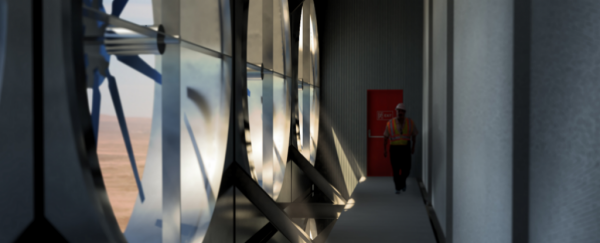A pilot project to suck CO2 out of the atmosphere and turn it into pellets that can either be used as fuel or stored underground for later has been launched by a Vancouver-based start-up called Carbon Engineering.
While the test facility has so far only extracted 10 tonnes of CO2 since its launch back in June, its operations will help inform the construction of a $200 million commercial plant in 2017, which is expected to extract 1 million tonnes per day - the equivalent of taking 100 cars off the road every year. It plans to start selling CO2-based synthetic fuels by 2018.
"It's now possible to take CO2 out of the atmosphere, and use it as a feed stock, with hydrogen, to produce net zero emission fuels," company chief executive Adrian Corless told the AFP.
Funded by private investors, including billionaires Bill Gates and oil sands financier Murray Edwards, Carbon Engineering is not the only company in the world intent on solving our carbon dioxide problems, but it claims to be the first to demonstrate how its technology can be scaled up to have both an actual environmental impact and commercial potential.
Instead of tackling the CO2 that pours out of factory smokestacks - because there are existing machines that do this pretty well - the Carbon Engineering 'direct air capture plant' will deal with everyday carbon emissions from buildings, transportation, and agriculture. "Emissions from sources you just can't otherwise capture," Corless says.
"It's still a pilot-scale plant," he told CBC News. "But it's very important, because it's the first time that anyone's demonstrated a technology that captures CO2 that has the potential to be scaled up to be large enough to be relevant from an environmental or climate point of view."
As we reported back at the time of the test plant launch, direct air capture works just like these new solar cells that split water into a hydrogen fuel. The recycling plant extracts CO2 from the air using a giant complex of fans and a liquid hydroxide solution that reacts with the air to form a carbonate mineral. This carbonate pellet is processed inside a locked vessel and converted back into carbon dioxide and water vapour, which can be used as fuel, or stored for later.

Carbon Engineering
According to CBC News, the larger plant should be able to produce up to 400 litres of gasoline or diesel per day using this method. One of the main things it has going for it is that because it turns the CO2 into fuel, no change in infrastructure will be needed to power big fuel-guzzlers such as ships, planes, and long-haulage trucks. Even existing petrol pumps can work with the fuel. A major limitation of solar and wind technologies, on the other hand, is that they require specific technologies to capture and disperse energy.
"The nice thing about the technology is that there are no real limitations for it to ultimately, in theory, displace all of the existing fossil-based transportation fuels," Corless said.
Going forward, the most important thing for Carbon Engineering to figure out is how to be commercially viable. As Kesavan Unnikrishnan points out at Digital Journal, carbon can cost anything from $1/tonne (Mexico and Poland) to $130/tonne (Sweden) around the world, and Carbon Engineering will need to sell its product at around $100/tonne to support itself commercially.
We'll have to wait and see how things go for direct air capture in the future, but we're so excited by its potential. Watch the video below to find out more about how it works:
